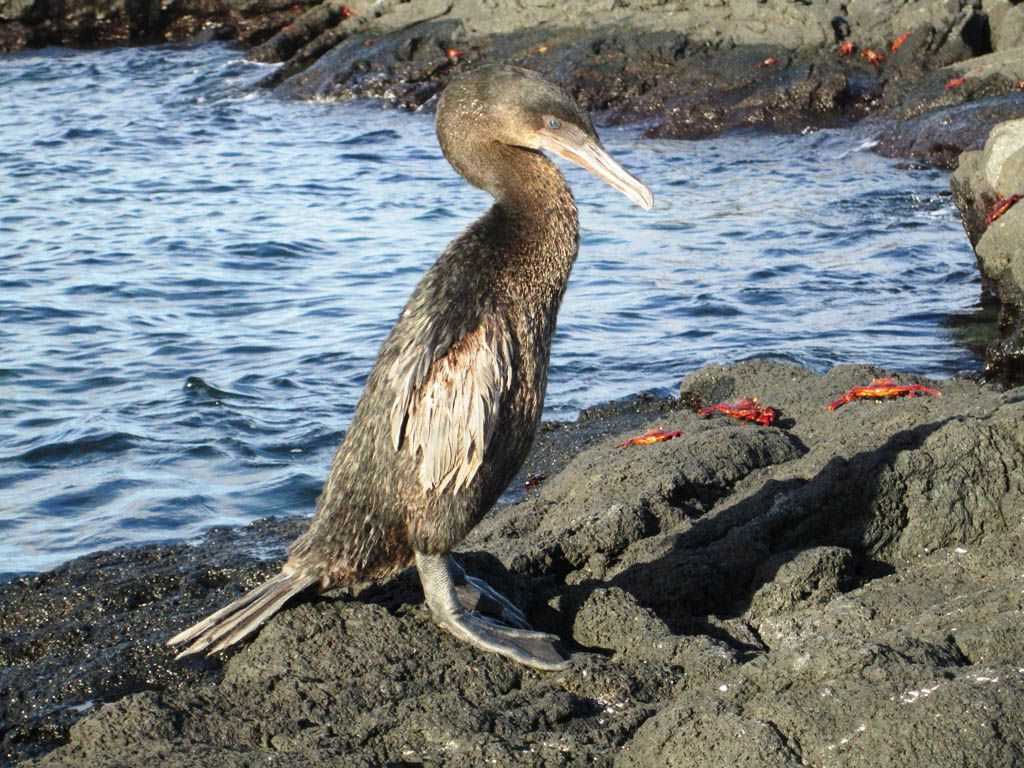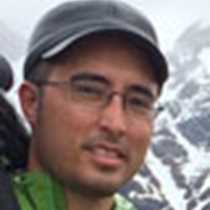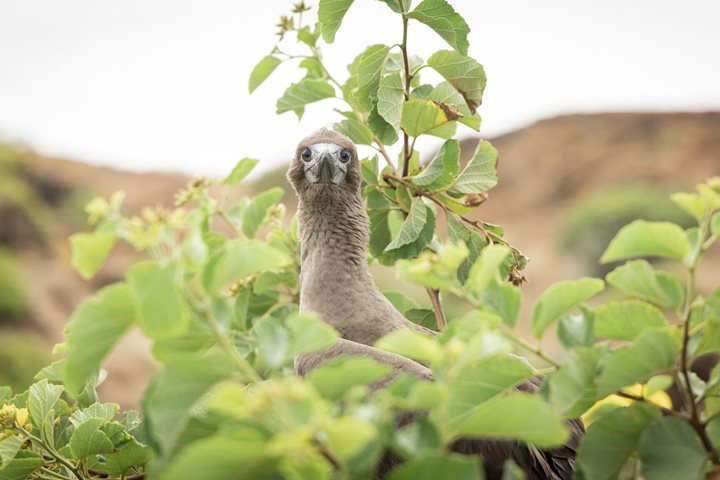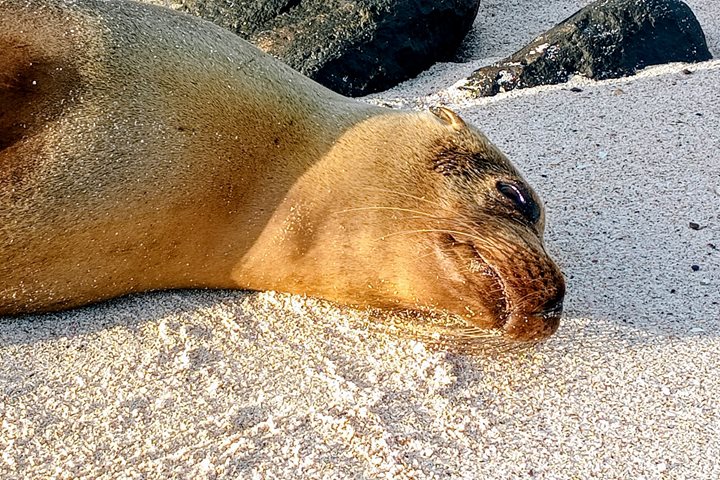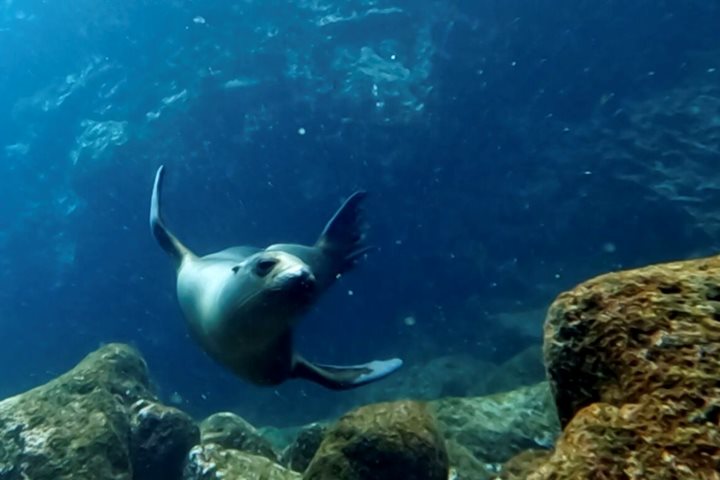Navigating from Rabida Island early in the morning, we woke en route to the two youngest islands in the archipelago, Isabela and Fernandina. Under a legacy of calm waters and cleared sky, we began our day on the lookout for marine life along the Bolivar Channel. We observed sea birds in feeding frenzy, sea lions swimming and jumping like dolphins, and a spectacular pod of seven orca whales transiting nearby. We identified two males and two calves, whose unmistakable dorsal fin captivated our guests as they enjoyed the incredible view from the top deck of National Geographic Islander. Soon after we crossed the equator, we dropped anchor at Punta Vicente Roca, situated at the foot of the immense Ecuador Volcano. We embarked on a Zodiac ride along the coast in search of unique wildlife. Galapagos penguins, green sea turtles, flightless cormorants, and seabirds were but a few on the list. Following, we came back to snorkel along shallows in the bay formed by the cove.
After lunch on board, and while in bound to Fernandina Island, our colleague Gilda spoke about Charles Darwin and his relationship to and researching of the Galapagos. Afterwards we headed back out by Zodiac to visit Punta Espinoza on Fernandina. Its barren landscape contrasted with the explosion of life found here is purely surreal.
Everywhere we walked we observed many marine iguanas whose black bodies looked as petrified as the rocks. On beaches, sea lions rested, while in the shallows the juvenile sea lions went on playfully in their own small world. Along the way, we came across our next non-flying bird, the flightless cormorant. We observed some on the rocks, drying their wings, and others in the water collecting algae and fish. The sunset along the west hearkened all sea birds back to their nests, ultimately lending us one last view of this magical place: two Galapagos hawks flying close to the rocks and on the hunt for iguana, a few of which rested placidly on the warm rocks.
Finally, we arrived back on board tired but happy, because we enjoyed this beautiful paradise called Galapagos.

